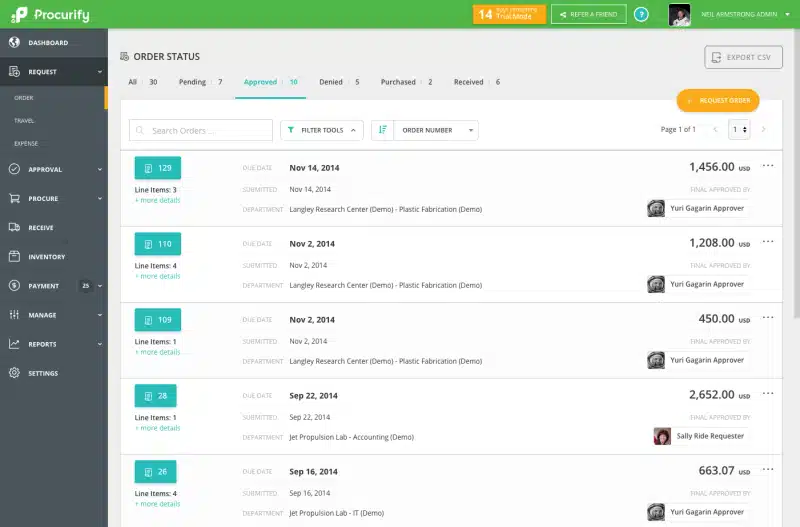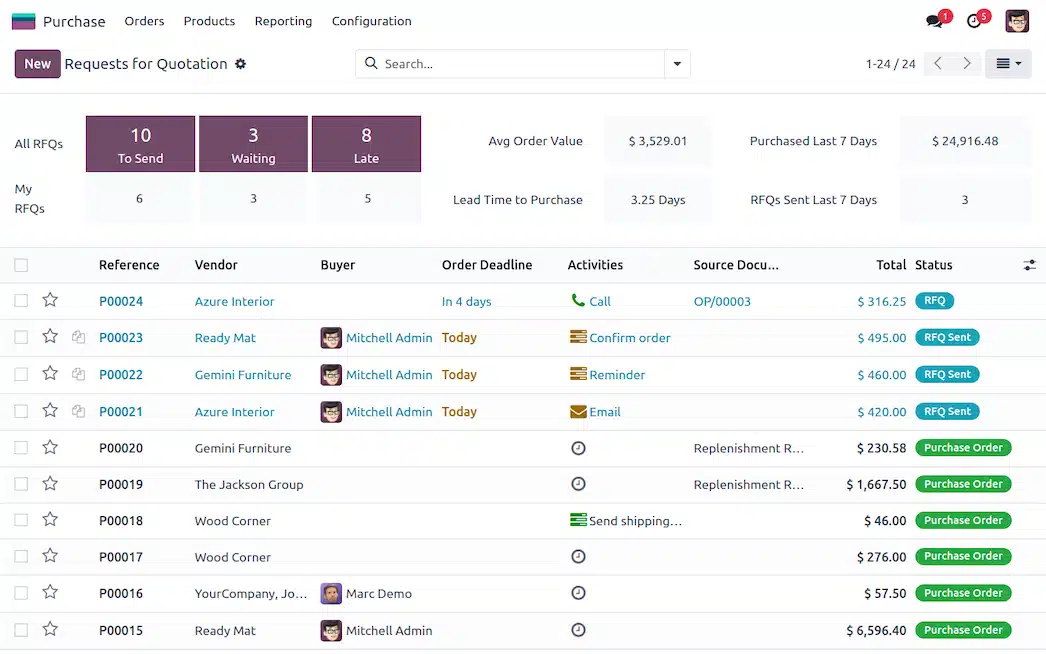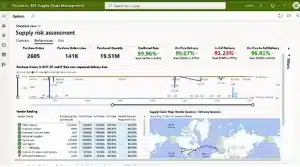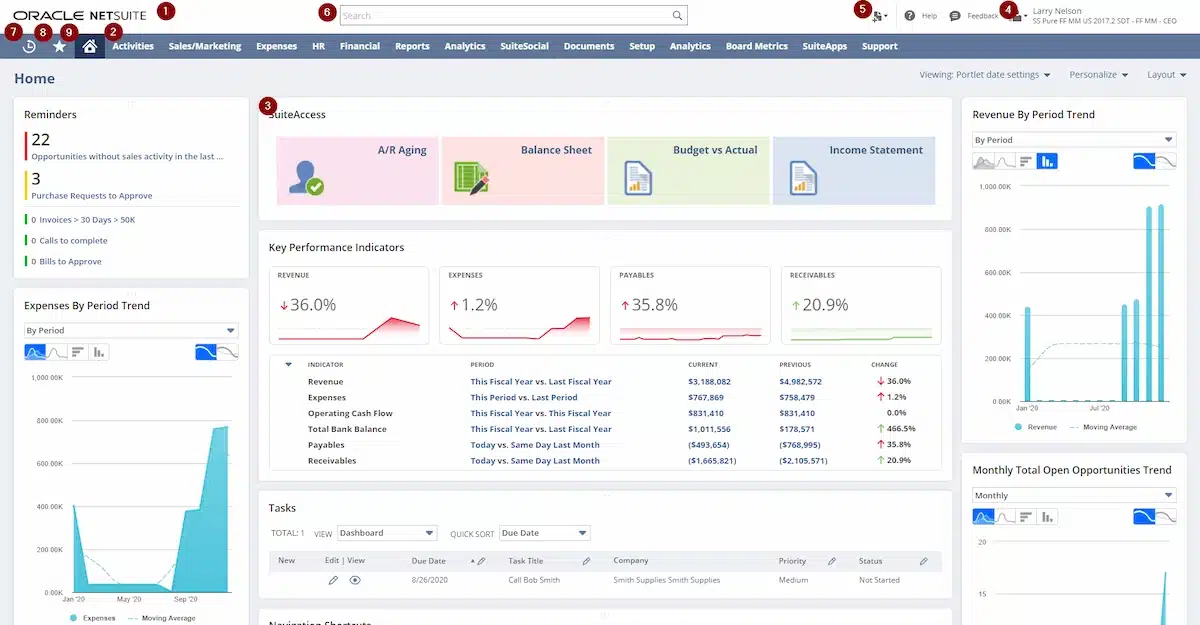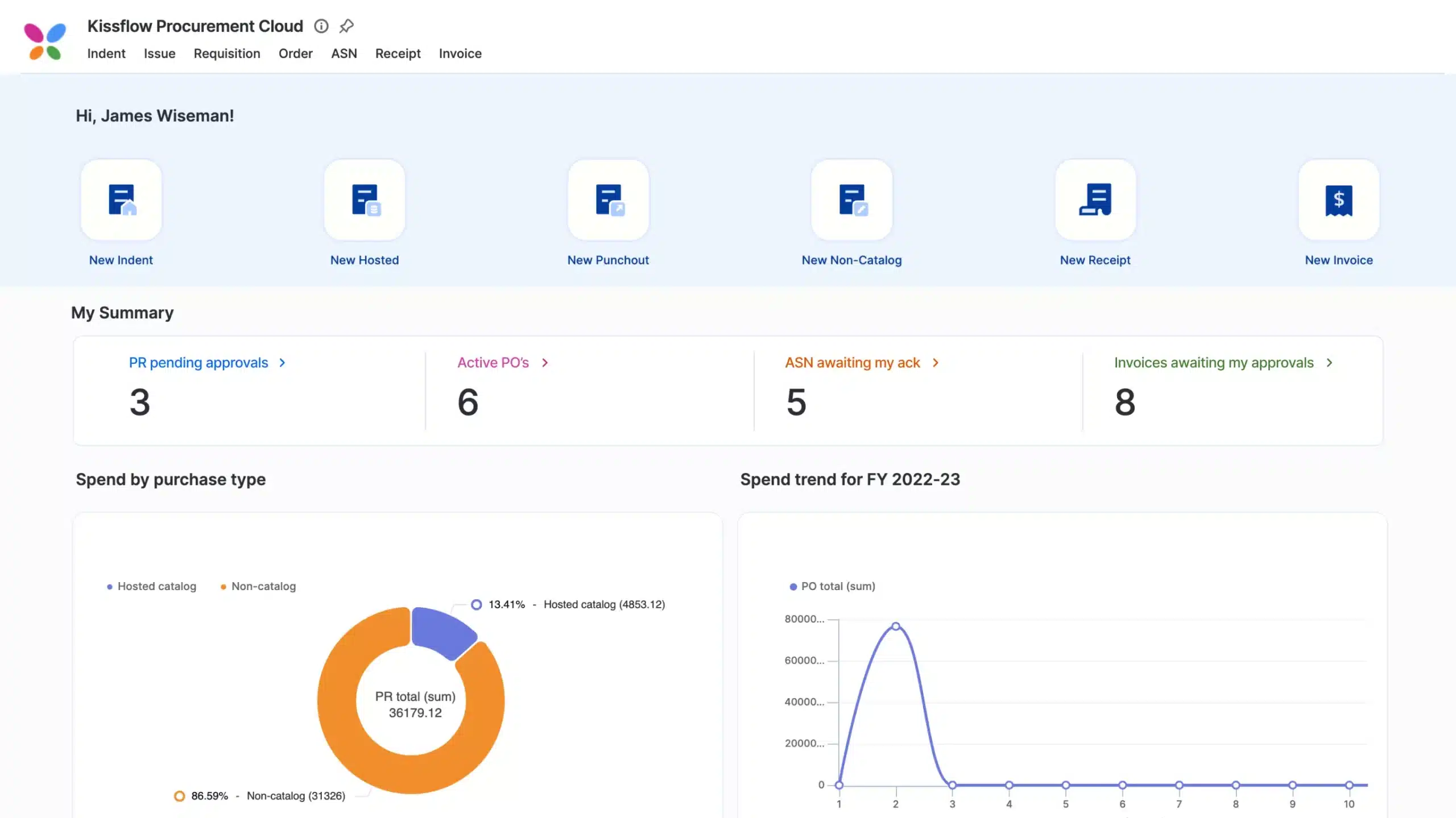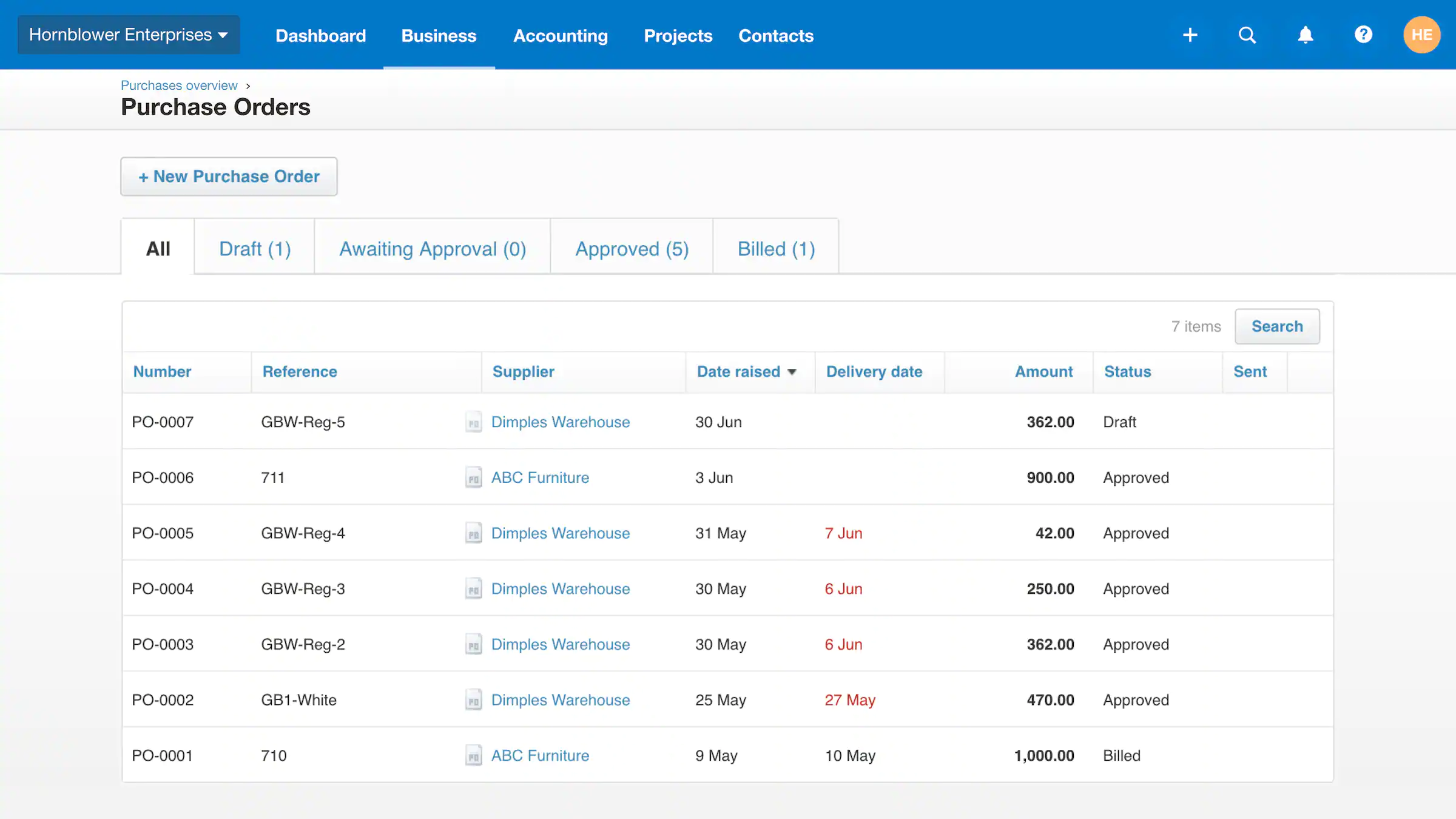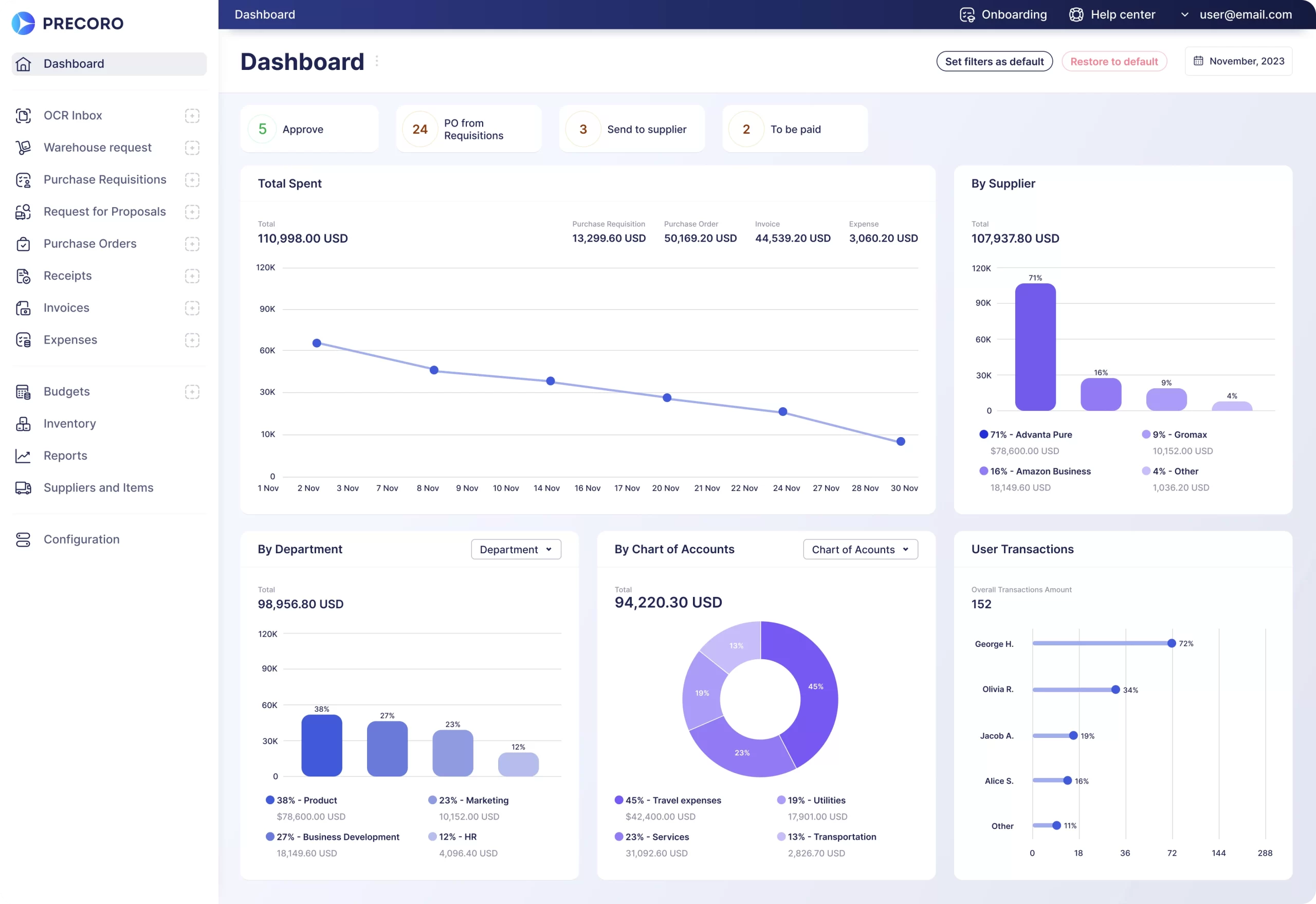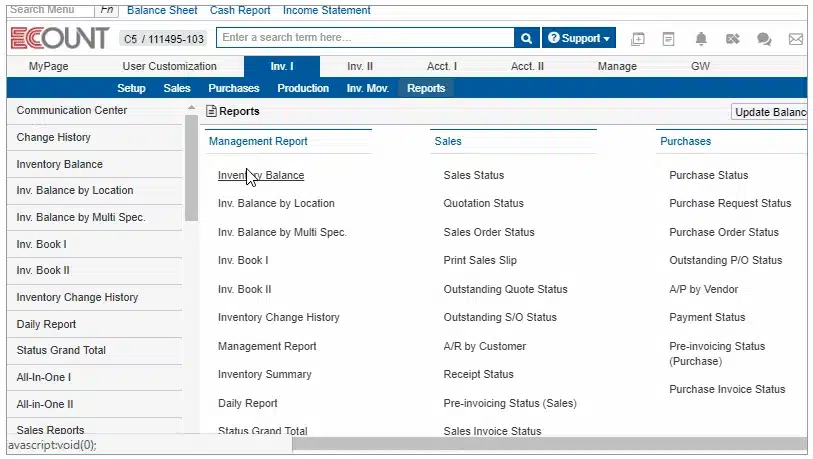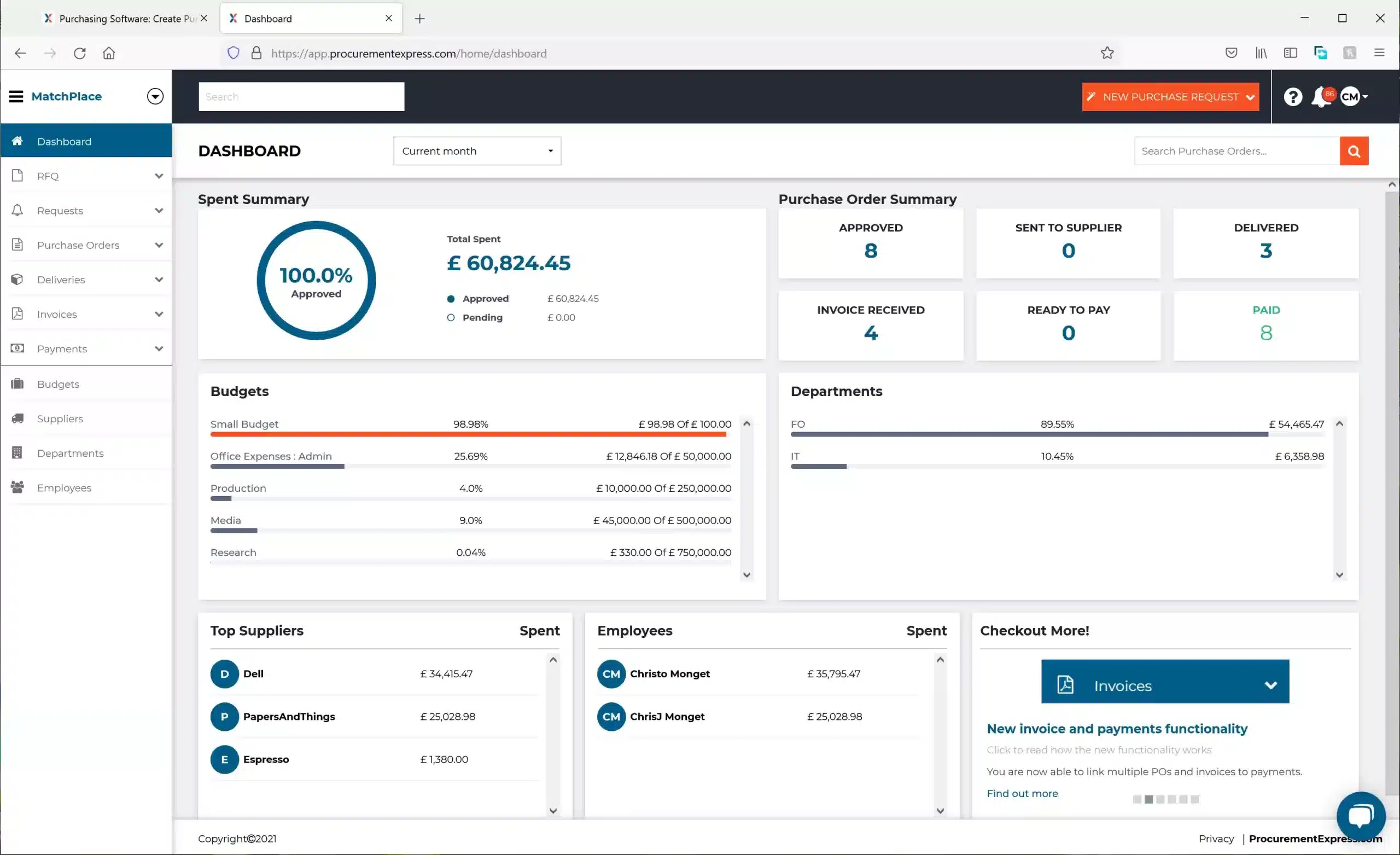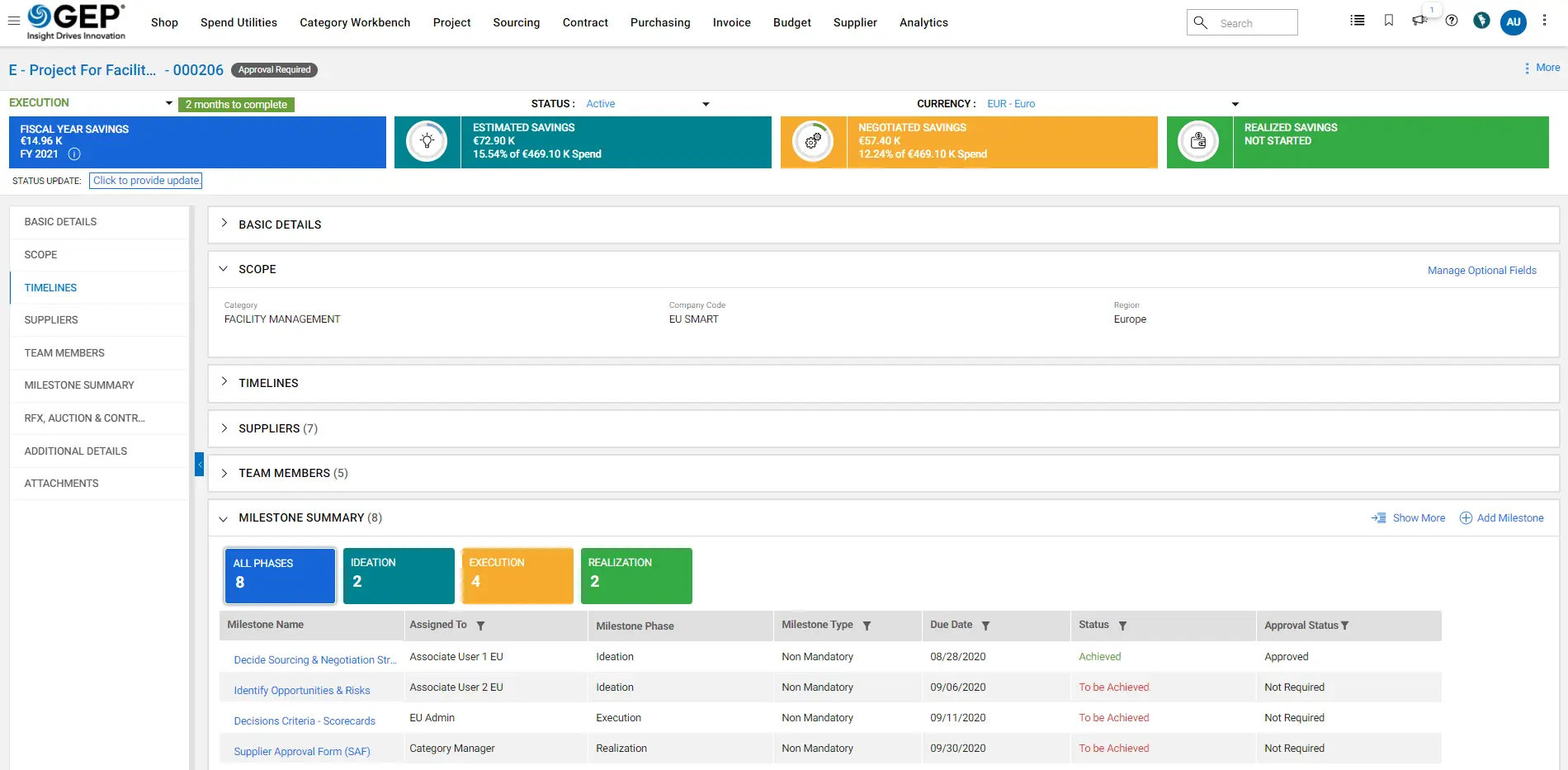Are you currently having trouble managing your purchasing? Or are you facing a problem where order management lacks transparency? If so, you need a purchasing system to manage your activities.
A purchasing system is a system used to manage the process of purchasing goods and services in an organization. This system helps companies to automate and streamline various stages in the purchasing process, from making requests to receiving goods and recording payments.
You are also in the right place because in this article we will present 12 recommendations for purchasing systems that you can use to manage your business!
Table of Contents

Key Takeaways
|
What is a Purchasing Software?
Before we finally present the 12 best purchasing software examples in the Philippines, we should first discuss what the purchasing system is so that those of you who still feel unfamiliar with this system can understand more deeply.
What is purchasing software? A purchasing system is software or procedures designed to help companies manage the process of purchasing goods and services efficiently. This system covers various stages in the purchasing cycle, from requesting goods, selecting vendors, making purchase orders, to receiving goods and recording payments.
One of the main functions of the purchasing system is to improve visibility and control over all purchasing activities. Companies can track every order in real-time, monitor spending, and ensure that the purchasing budget does not exceed predetermined limits.
The system also allows users to create detailed reports on purchasing patterns, vendor spending, and process efficiency, which is crucial for making strategic decisions. Integration with other systems, such as inventory management or accounting systems, also facilitates data synchronization and reduces the risk of errors.
Hashy AI Fact

Need to know!
Managing purchases efficiently requires the right system. Hashy AI automates orders, tracks spending, and syncs with accounting to streamline your purchasing process. Get a free demo now!
Get a Free Demo Now!
12 Best Purchasing Software in the Philippines 2025
Here are 12 recommendations for the best purchasing systems in the Philippines to improve your operational efficiency:
- HashMicro Procurement Software: Best overall with AI-driven automation and seamless ERP integration.
- Purchasing Management Software Procurify: Best for real-time spending insights and budget control.
- Odoo Procurement Software: Best open-source option with customizable purchasing workflows.
- Microsoft Dynamics 365: Best for enterprises with advanced supply chain and procurement tools.
- Purchasing Software System Oracle iProcurement: Best for large-scale procurement automation.
- Kissflow Procurement Software: Best for workflow automation with easy purchase approvals.
- Xero Procurement Software: Best for accounting integration with simple purchasing features.
- Purchasing Management Software Precoro: Best for mid-sized businesses with strong approval controls.
- ProcurePort: Best for e-sourcing with competitive bidding and supplier management tools.
- Purchasing Software Ecount: Best for small businesses with cloud-based procurement tracking.
- ProcurementExpress: Best for budget management with real-time expense monitoring.
- GEP SMART: Best AI-powered solution with end-to-end procurement automation.
Let’s take a detailed look at each purchasing software and its key features.
1. HashMicro Procurement Software
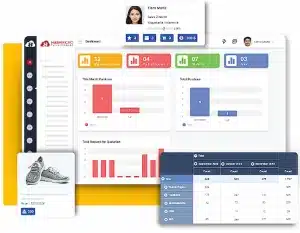
This integration allows for seamless data flow between departments, so that every part of the purchasing process, from ordering to receiving goods and recording payments, can be done in an efficient and coordinated manner.HashMicro also provides consultations with a team of experts and free demos that can be accessed anytime and anywhere.
In addition, HashMicro’s purchasing system is also designed to increase transparency in the purchasing process. With its real-time purchase tracking feature, every transaction can be monitored and recorded in detail. This helps to prevent fraud, facilitate audits, and ensure that all processes are running in accordance with established policies.
Top features offered by HashMicro’s purchasing system:
- OCR for RFQ: Speeds up the process of digitizing physical RFQs into the system and reduces the possibility of input errors when done manually.
- Automatic Vendor Rating: Ensures that companies work with trusted vendors based on order fulfillment.
- Cost Savings Tracking and Reporting: Provides detailed reports on cost savings to be able to prioritize suppliers that provide significant cost savings or identify other areas where efficiency can be improved.
- Vendor Promotion Program Management: Know which vendors provide the best deals, optimize the benefits of vendor promotions, and ensure that the best deals are leveraged to their full potential.
| Pros | Cons |
|
|
2. Purchasing Management Software Procurify
Procurify is a purchasing software application designed to help companies manage the process of purchasing goods and services more effectively and structured. By using this software, the procurement process becomes more optimized because Procurify provides various features that facilitate every stage of purchasing.
One of the main features is the purchase request submission, which allows users to submit requests for goods or services easily and quickly. This process becomes simpler, minimizing delays and errors in submission, while ensuring that purchase requests are immediately documented and managed in one integrated purchasing system.
Top features offered by Procurify’s purchasing system:
- Approval process
- Purchasing workflow
- Budget tracking
- Expense management
| Pros | Cons |
|
|
3. Odoo Procurement Software
Odoo Purchase is one of the modules in the Odoo ERP suite specifically designed to efficiently manage the procurement and purchasing processes of businesses. This module allows companies to automate the entire purchasing cycle, from request submission to payment settlement.
Equipped with an easy-to-use interface and integrated features, Odoo purchasing system helps businesses reduce expenses, improve control, and accelerate procurement workflows, making the purchasing process run more smoothly and effectively.
Top features offered by Odoo’s purchasing system:
- Automated purchase requests
- Supplier management
- Purchase order
- Integration with inventory
| Pros | Cons |
|
|
4. Microsoft Dynamics 365
Microsoft Dynamics 365 purchasing system is an ERP solution that helps manage a company’s purchasing process more efficiently. The system comes with vendor management features, which allow companies to track and manage relationships with suppliers, including their contracts, performance, and compliance.
Top features offered by Microsoft Dynamics 365:
- Vendor management:
- Purchase automation
- Expense analysis
- Custom workflows
- Vendor portal
| Pros | Cons |
|
|
5. Purchasing Software System Oracle iProcurement
The Oracle iProcurement system is a web-based e-procurement solution designed to simplify a company’s procurement process. The web-based requisition management feature allows employees to create, manage and track purchase requisitions through a web interface, easing the process of ordering goods and services online.
In addition, the system offers spend analysis, which provides insights into the company’s spending patterns, assisting in budget management, as well as identifying savings opportunities by analyzing real-time procurement data.
Top features offered by Oracle:
- Web-based requisition management
- Integration with suppliers
- Expense analysis
- Process automation
| Pros | Cons |
|
|
6. Kissflow Procurement Software
Kissflow Procurement Cloud is a procurement and vendor management software used in the Philippines, suitable for companies of all sizes. The system enables live monitoring of product stock, purchase requests, and status updates.
Administrators can evaluate vendor performance based on policy compliance, reputation, product quality and on-time delivery. Suppliers also have access to a standalone portal to update data and receive order notifications.
Top features offered by Kissflow:
- Invoice automation
- Spend analytics
- Inventory management
- Contract management
| Pros | Cons |
|
|
7. Xero Procurement Software
Founded in 2006, Xero offers a range of solutions designed to support your business operations. One of its flagship solutions is purchase order software, which serves to make it easier for companies to manage the procurement process.
With this software, companies can create and send purchase orders online more efficiently, reducing the time required in manual processes and improving the accuracy of order management. This solution is designed to make it easier for companies to optimize procurement workflows, ensuring orders can be processed quickly and on time.
Top features offered by Xero:
- Purchase order creation and tracking
- Multi-application integration
- Automation of record keeping
| Pros | Cons |
|
|
8. Purchasing Management Software Precoro
Precoro is a cloud-based procurement software in the Philippines that streamlines purchasing processes. Key features include purchase order creation and management, blanket POs, visual analytics for departmental spending, invoicing, real-time budgeting, receiving, and catalog management with product links.
Precoro provides various functionalities, including integrations with NetSuite and QuickBooks, as well as access to a free API. Users also enjoy improved security and automated reporting, ensuring transparency throughout the procurement process.
Top features offered by Precoro:
- Stock monitoring
- Real-time request handling
- Automated process management
| Pros | Cons |
|
|
9. ProcurePort
ProcurePort is a purchase order application designed to help companies manage the process of purchasing goods and services in a more efficient and integrated manner. Through the use of ProcurePort Purchase Order Application, companies can optimize the purchasing flow and make smarter decisions based on available data.
Top features offered by ProcurePort:
- Supplier management
- Contract management
- Expense analysis
| Pros | Cons |
|
|
10. Purchasing Software Ecount
Ecount’s purchasing software, also referred to as the Ecount ERP Purchasing Module, is designed to simplify and automate purchasing processes within businesses. With a presence in the Philippines, it offers easy access to customer support. The software aims to enhance procurement efficiency, reduce costs, and promote collaboration between different departments and suppliers.
Top features offered by Ecount:
- Inventory management
- Sourcing and RFQ
- Budgeting and spending analysis
| Pros | Cons |
|
|
11. ProcurementExpress
ProcurementExpress is a web-based purchase order (PO) application that simplifies the company’s purchasing process through one cloud platform. This application can also be integrated with the company’s accounting system. By using this PO application, companies can get various benefits. One of them is making it easier for management to respond to customer requests recorded in the software efficiently.
Top features offered by ProcurementExpress:
- Approval workflows
- Budget tracking
- Mobile access
| Pros | Cons |
|
|
12. GEP SMART 
GEP SMART is an all-in-one source-to-pay (S2P) purchase planning software that streamlines both direct and indirect spend management within a single cloud-based platform. It integrates multiple procurement tools, removing the need for separate systems or modules.
GEP SMART enhances procurement efficiency, speeds up digital transformation, and improves the performance of procurement teams. It provides in-depth analytics for CPOs, broad control for category managers, and simplified ordering processes for buyers.
Top features offered by GEP SMART:
- Purchase-to-pay
- Vendor management
- Supplier sourcing
| Pros | Cons |
|
|
Benefits of Using a Purchasing Software
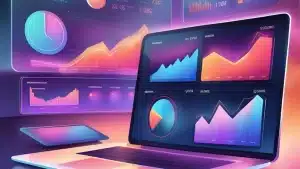
Operational efficiency
The purchasing system automates various stages in the purchasing process, such as creating purchase orders, requesting quotations, approving orders, and recording receipt of goods and payments. With this automation, companies can reduce the time usually spent on manual tasks, such as filling out purchase forms or physically sending approval documents.
Integrated and automated processes allow the purchasing team to focus on other strategic tasks, such as negotiating with vendors, without having to worry about time-consuming administrative details. Moreover, with automated notifications and reminders, companies can avoid delays in order fulfillment.
Better cost control
The purchasing system provides full visibility into all expenses related to the purchase of goods and services. With spending data available in real-time, companies can easily monitor whether the purchasing budget has been exceeded or is still within the set limits.
The system also enables better contract management, helping companies get the best price quotes through more structured negotiations with vendors. In addition, with automated controls that limit overspending, the risk of wasteful or unapproved spending is minimized, resulting in a better-managed budget.
Data transparency and accuracy
One of the main advantages of a purchasing system is its ability to record and store all purchasing transactions in one centralized platform. Every step in the purchasing process is well-documented, from purchase requests, vendor selection, to goods receipt and payment.
This reduces the risk of errors in recording or loss of important documents. With accurate and documented records, companies can also audit or analyze purchasing data more easily, so that data-based decision making becomes more precise and informed.
How Purchasing Software Integrates with Your Overall Business Operations
Supply Chain
For direct procurement, supply chain and manufacturing teams must ensure a steady flow of raw materials to prevent production delays. Purchasing software simplifies the transition to a new, qualified supplier by providing necessary data for quick decision-making. Faster approval workflows also help maintain seamless production by ensuring essential materials are always available.
Accounting and Finance
Purchasing software benefits finance departments by consolidating all spending data into a centralized system. This helps them manage accounts effectively and ensure timely employee payments.
A single platform for tracking receipts, invoices, and purchase orders reduces workload while enhancing accuracy. It also enables better analysis of spending trends, supporting more informed budgeting decisions.
Employees
Employees handling purchases will find it easier to submit purchase requests with automated systems. Instead of entering data manually, they can use custom forms and dropdown menus, making the request process quicker and more efficient.
Upper Management
A key feature of purchasing software is role-based access control, ensuring only authorized personnel can approve procurement requests. To further enhance procurement oversight and efficiency, businesses can integrate a procurement management system, which provides centralized control over procurement activities.
How to Choose the Right Purchasing Management

- Understand your needs: Assess your company’s size, industry, and specific procurement requirements before selecting a system. A good PMS should align with your business goals and automate tasks like order processing, inventory management, and supplier communication to minimize manual work and errors.
- Integration capabilities: Ensure the purchasing management system integrates seamlessly with other business software, such as ERP or accounting systems. This allows for smooth data transfer across departments and improves overall business efficiency.
- User-friendly interface: Choose a system that is easy to use for your procurement team and other departments involved. A simple, intuitive interface reduces training time and encourages adoption across the organization.
- Scalability: Select a system that can grow with your business. As your company expands, your purchasing needs may evolve, so choosing a system that can scale to accommodate increased volume, new suppliers, and additional features is essential.
- Vendor support and reputation: Research the vendor’s reputation and support services. Opt for a provider with a strong track record and a responsive support team, as ongoing assistance is vital to resolve any issues that may arise after implementation.
- Cost-effectiveness: Evaluate the system’s pricing structure and ensure it fits your budget. While choosing a system with the right features is essential, ensure that it offers good value for money and provides a clear ROI over time.
By carefully considering these factors, you can choose a purchasing management system that enhances efficiency, reduces costs, and supports long-term growth for your business.
Conclusions
In conclusion, the use of a purchasing system is essential for companies in the Philippines to optimize operational efficiency and reduce manual errors. With features such as workflow automation, vendor management, and real-time tracking, the system helps improve accuracy in purchasing management, speed up the procurement process, and ensure compliance with company policies.
In addition, integration with other systems makes data management easier and more transparent, which in turn improves productivity and minimizes risks caused by human error. Schedule your free demo now!
FAQ About Purchasing Software
-
Which software is used for purchasing?
HashMicro’s Purchasing Management System (PMS) is a comprehensive solution used for managing purchasing processes. It streamlines procurement tasks such as order placement, supplier management, and inventory tracking, all in one platform.
-
What does it mean to purchase software?
To purchase software means acquiring a digital solution that automates and streamlines your business operations, such as procurement. HashMicro’s software helps businesses handle the purchasing lifecycle efficiently, from order creation to supplier payment, ensuring smoother processes and improved productivity.
-
What is an example of a purchasing system?
An example of a purchasing system is HashMicro’s Purchasing Management System, which simplifies procurement by automating tasks, tracking purchases, and managing suppliers in real-time. This all-in-one solution helps companies improve operational efficiency and reduce costs.
-
What is the best software for procurement?
HashMicro offers one of the best procurement solutions, designed to help businesses automate purchasing, manage suppliers, and optimize procurement processes. Its user-friendly interface, integration capabilities, and scalability make it an ideal choice for companies of all sizes.










